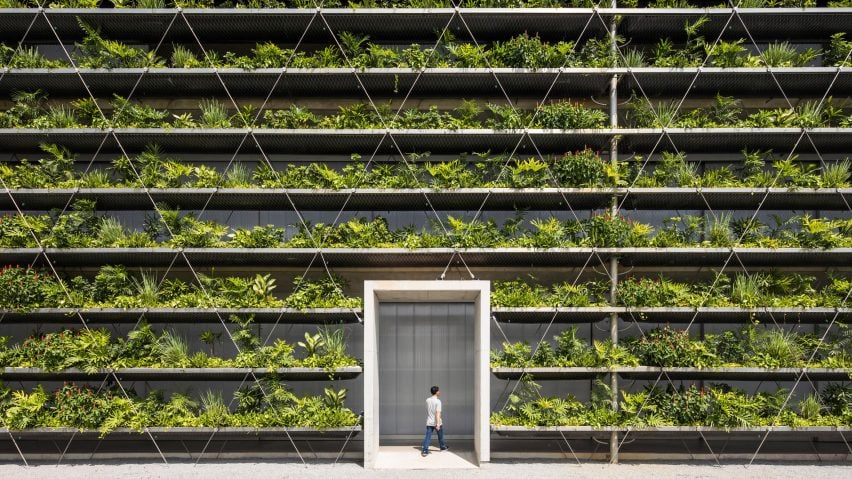Facades at this factory in an industrial park near Ho Chi Minh City are filled with layers of greenery that provide shelter from the rain and sun, as well as helping to purify the air.
The factory was designed by Switzerland-based Rollimarchini Architects and global firm G8A Architects for a Swiss company called Jakob Rope Systems, which specialises in manufacturing stainless steel wire.
The 30,000-square-metre site is located in an industrial park around 50 kilometres north of Vietnam's largest city, in a region that has seen a huge amount of commercial development in recent decades.
The construction of factories has meant large areas within the region have been covered with concrete, which prevents water from draining away and can increase temperatures, damaging the existing local ecosystem.
G8A Architects and Rollimarchini Architects proposed a more environmentally friendly alternative to the typical single-storey factories that dominate the industrial park and the surrounding area.
Rather than spreading out horizontally and occupying an excessive amount of land, the Jakob Factory comprises two main perpendicular wings containing stacked concrete floor slabs.
The factory's vertical arrangement reduces the building's overall footprint, providing space for attractive and functional landscaped gardens within an inner courtyard.
"The client was open to keeping some kind of true-ground condition that would help to cool the space and also give the local ground a chance to survive," explained G8A Architects partner Manuel Der Hagopian.
The arrangement of two- to three-storey buildings enclosing a courtyard references the organisation of typical Vietnamese villages. An L-shaped structure with a curving roof provides sheltered parking spaces alongside the production areas.
The manufacturing halls are ventilated by breezes entering through porous facades informed by the region's traditional tropical architecture. The architecture studios claimed that the factory "becomes the first project in Vietnam proposing completely naturally ventilated manufacturing halls".
Working areas were enclosed by facades incorporating horizontal geotextile planters filled with plants that filter the sun and rain while offering a pleasant green outlook from inside.
The architecture studios added that the greenery also "contributes to lowering the atmospheric temperature through evaporation, acting as air purifiers and dust particle binders".
The planters were positioned along the outer edges of corridors extending around the perimeter of the production halls. The client company's steel cables are used to brace the facade elements and mesh netting is used to create a see-through balustrade where required.
Tapered concrete portals punctuating the leafy walls mark the main entrance on the external elevation and a way into the staff canteen from the central courtyard.
The Jakob Factory project features on the shortlist for best business building at Dezeen Awards 2022, alongside projects including a giant greenhouse added to the roof of an agricultural market in Belgium.
The photography is by Hiroyuki Oki, unless stated.

